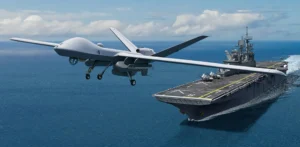Source : Asia Times
 |
| Representative Image |
Sri Lanka’s pre-emptive default on its foreign debt obligations in mid-April 2022 and recently resigned president Gotabaya Rajapaksa’s flight from Sri Lanka on 12 July provides India with an opportunity to match China in the foreign aid game.
The Indian government held an all-party meeting on the Sri Lankan crisis on July 19 and new President Ranil Wickremesinghe was sworn in on July 21. The debt default and a shortage of US dollars in Sri Lanka has caused stagflation — high unemployment and little growth — in its economy. Inflation has spiraled to over 50%, leading to higher food and fuel prices. There is significant food insecurity in Sri Lanka and some 750,000 people have fallen into poverty. The economy could contract by more than 6% in 2022.
This economic crisis —Sri Lanka’s worst since gaining independence in 1948 — is due to a tepid recovery from the Covid-19 pandemic, the Russia–Ukraine conflict shock and economic mismanagement under Rajapaksa’s administration.
Sri Lanka faces challenges in getting foreign aid. Some 60% of the world’s poorest countries are also experiencing debt distress, and the prospect of a second global recession in the next three years could dampen the rest of the world’s enthusiasm to support Sri Lanka.
Some perceive Sri Lanka’s economic crisis to be largely of its own making through mismanagement and corruption, and question why another country should have to bail out its economy.
India was the first to respond to Sri Lanka’s desperate calls for foreign aid to tackle its crippling debt and economic crisis.
India has been motivated by both the unfolding humanitarian crisis affecting the Sri Lankan people and political pressure from South India. In the first six months of 2022, Indian aid worth US$3.5–4 billion has flowed to Sri Lanka through credit lines, loans and grants. This is India’s largest bilateral aid program in recent times.
Supporting Sri Lanka could be in India’s best interest. Stabilizing Sri Lanka’s economy could be a major win for Indian Prime Minister Narendra Modi’s neighborhood-first policy. Once the Sri Lankan economy stabilizes, India could deepen its trade and investment linkages with Sri Lanka, transcending the current humanitarian aid relationship.
This could spur regional integration and prosperity. It could also help advance India’s long-held ambition of securing a seat on the United Nations Security Council. Meanwhile, an unstable Sri Lankan economy could pose security risks to India and lead to a flood of refugees across the Palk Strait.
India cemented its first mover advantage over China by leading an aid consortium for Sri Lanka, working closely with others like the United States, Japan, the European Union, and the International Monetary Fund (IMF).
Back-of-the-envelope calculations suggest that Sri Lanka will require between US$20–25 billion over the next three years to provide essential imports of food, medicine and fuel for Sri Lankan people and to help stabilize the economy.
Despite benefitting from commercial loans for Belt and Road projects in Sri Lanka, which have fuelled a “debt trap” narrative, China faces a dilemma in bailing out Sri Lanka.
China worries that unilaterally restructuring Sri Lanka’s debt or giving it moratoria would set a new precedent in its lending practices and cause a queue of similarly distressed countries seeking debt relief from China. China, wanting to challenge the United States, does not want its reputation to be tarnished by bailing out a floundering economy.
There are many important issues facing the new administration. It must show it is serious about stabilizing the economy by concluding talks on an IMF program that will increase taxes and utility prices to raise revenue. It must also increase interest rates to control inflation while preserving social welfare expenditures to protect the poor.
The new government will have to implement structural reforms to make the economy more open to trade and investment and allow market forces to determine resource allocation.
This means reducing barriers to trade and investment and cutting large amounts of red tape. It will also have to build a national consensus on implementing the IMF program and reforms by explaining that this is the only solution to the crisis.
The rule of law needs to be restored and strong anti-corruption policies, including asset declarations for all parliamentarians and a strong anti-corruption office supported by the United Nations, need to be enforced. The executive presidency should also be abolished to prevent more corrupt leaders from gaining too much power.
The new government will also need to reset foreign policy toward a more neutral direction and away from the overly pro-China stance of Mahinda and Gotabaya Rajapaksa.
With political will and the right set of policies, Sri Lanka stands a sporting chance of achieving some economic normalcy in the next two to three years. India stands to gain by supporting Sri Lanka in its hour of need.





